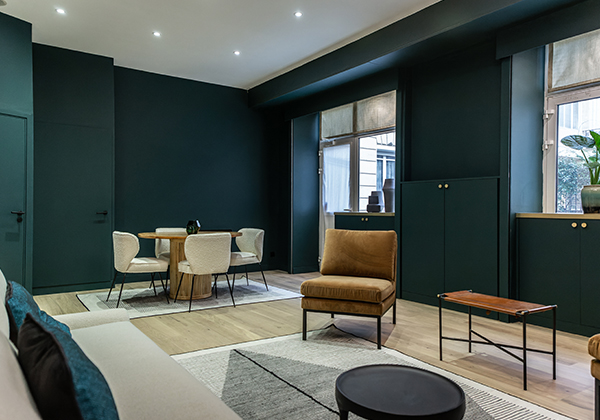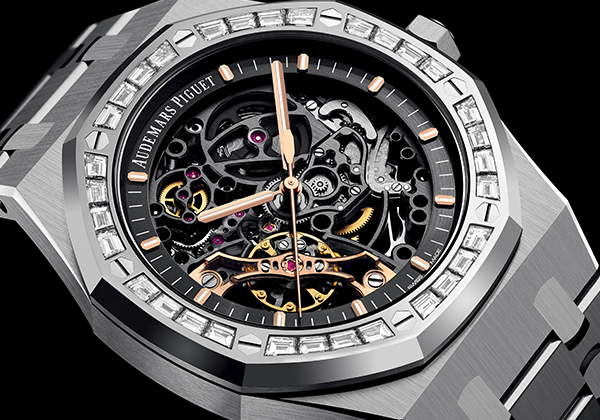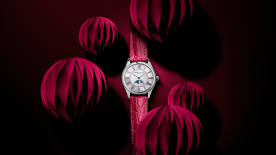How is Chronext different from the competition?
We’re the only ones with a truly hybrid offer of both new and pre-owned watches. We sell only our own inventory from individuals, retailers or brands, which enables us to propose a wide selection and respond quickly. Also, we combine the best of ecommerce and traditional retail, with the possibility to place an order online then come and collect the watch at one of our lounges.
If you look at the online watch market, you’ll see the local brick-and-mortar retailers selling the products they have in stock, which can only ever be a limited number and selection. Then, at the opposite end of the scale, you have the non-specialist sites where anyone can put up an item for sale, which raises issues of authenticity and quality. We’re hybrid. When you buy from us, you’re buying from Chronext, never from a third party, a private individual or a retailer. We handle the transaction from start to finish. From the initial email to the first call through to the sale, you’re always in contact with a Chronext consultant. We also provide customer service and, of course, the authentication of every watch we propose.

Tell us about your mid-term objectives.
We opened for business on February 23rd 2013. We’re part of an industry that’s worth €90 billion, for new and pre-owned. We believe a billion-dollar player can emerge, which is what we hope to be within the next ten years.
Which products sell themselves?
New watches need no explaining. Everyone knows what “new” means. It’s slightly more delicate when it comes to “certified pre-owned”. What does “certified” mean, for example? “AAA” certification or “vintage”? What matters to us is that within the next five years, the pre-owned market should be worth more than the market for new watches.
Would you like to see all online sellers use the same grading system, such as “AAA”, “AA”, etc.?
Good question. No-one has asked me that before...[thinks]. It would be tricky to set up. We don’t all have the same criteria, the same standards, the same control procedure. At Chronext we employ more than twenty watchmakers, there are almost 200 of us; you can’t really compare us with the watch shop down the road and its e-commerce site. It would be a good idea but everyone has their own standards and everyone thinks that theirs are the best. It wouldn’t be easy to put in place.
How do you work with brands? Are you able to get new watches?
Yes, we have watches from current collections that are one, two or thirty years old. More to the point we have “grail” watches such as the Nautilus and the Daytona. As strange as it may seem, they are harder to source from physical stores than to find online. People who own one of these watches get in touch spontaneously.
In your opinion, what should collectors be looking out for in the next three to five years?
A brand such as Breitling, especially since Georges Kern took over, offers strong prospects. The SuperOcean for example. Personally I’d say Audemars Piguet’s Double Balance Wheel ref. 15407ST as well. They’ve made a well-finished, well thought-out product with no real equivalent. They produce around a hundred a year, I believe. It’s very hard to obtain. It’s one of what I call the “ten-metre watches”, meaning you instantly know what it is from ten metres away. Then there’s Tudor, which is breaking free of Rolex. The latest Black Bay Silver, for example. Are these good investments? Potentially. Either way, they’re ones to watch.

You carry some very niche brands, such as Morgenwerk. What do you gain from them?
We can give these brands exposure. For our customers, it means a diversity of products which they don’t generally see elsewhere. This is especially true for physical stores which have limited display space and therefore have to make choices, which generally means giving priority to whatever sells best. The market is becoming more demanding. Customers look for brands with acknowledged credentials. Czapek is making some very high level watches, for example. We specialise in volume brands but should we start seeing demand for these niche brands then yes, we’re open to working with them.
Are you open to selling all types of brand or is it a tighter selection?
We’re not limited to what comes off the production lines. Our job is to give the customer what they want, whether that’s Breitling, Rolex, Omega or Panerai. If we don’t carry a brand, it’s simply because there’s no demand for it at Chronext.
Where do you plan to open your next store?
They’re not actually stores. In fact we prefer to call them lounges. It’s a subtle difference. These aren’t places you walk into, make a purchase and leave. They’re not visible from the street, there’s no sign over the door. In 99% of cases, customers make their purchase online and some then collect their watch from one of our lounges. Our objective is to be there where our customers are. We start with a pop-up lounge then, if business is good, it becomes permanent.
Currently we’re focused on the European market. We concentrate on where our traffic is. We’ve just opened in France and Italy. Sweden and Denmark should be next. There’s no real limit. First the customer, then the lounge. A lounge doesn’t create demand. It converts demand into sales.
You recently postponed your initial public offering. Why was that and what will the next steps be?
We’re still committed to a public listing. Last year’s market conditions simply weren’t favourable for a high-growth company such as ours, with average growth of +104% per year and +47% over the past 24 months. We’ll choose the best time to go ahead with the IPO.





